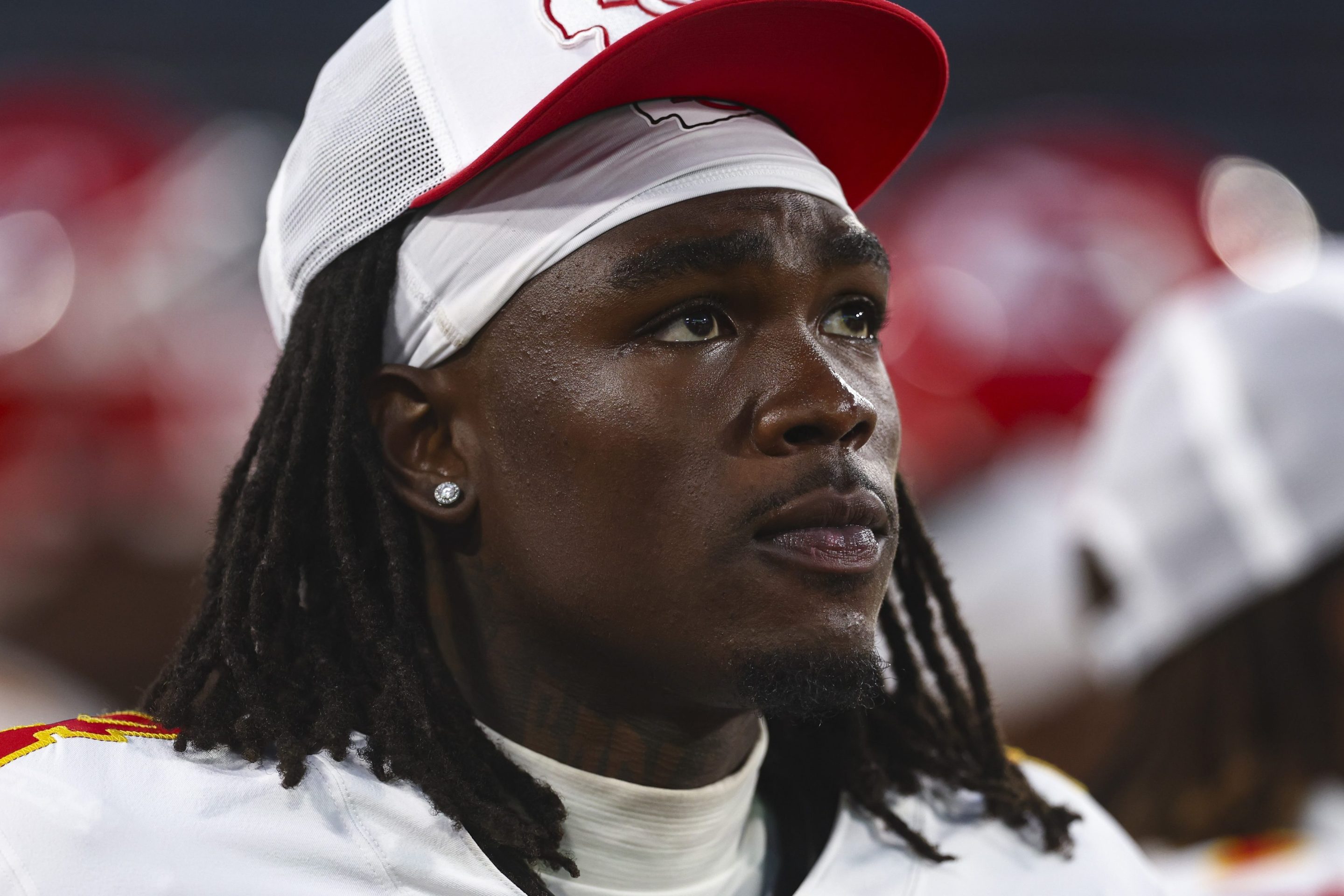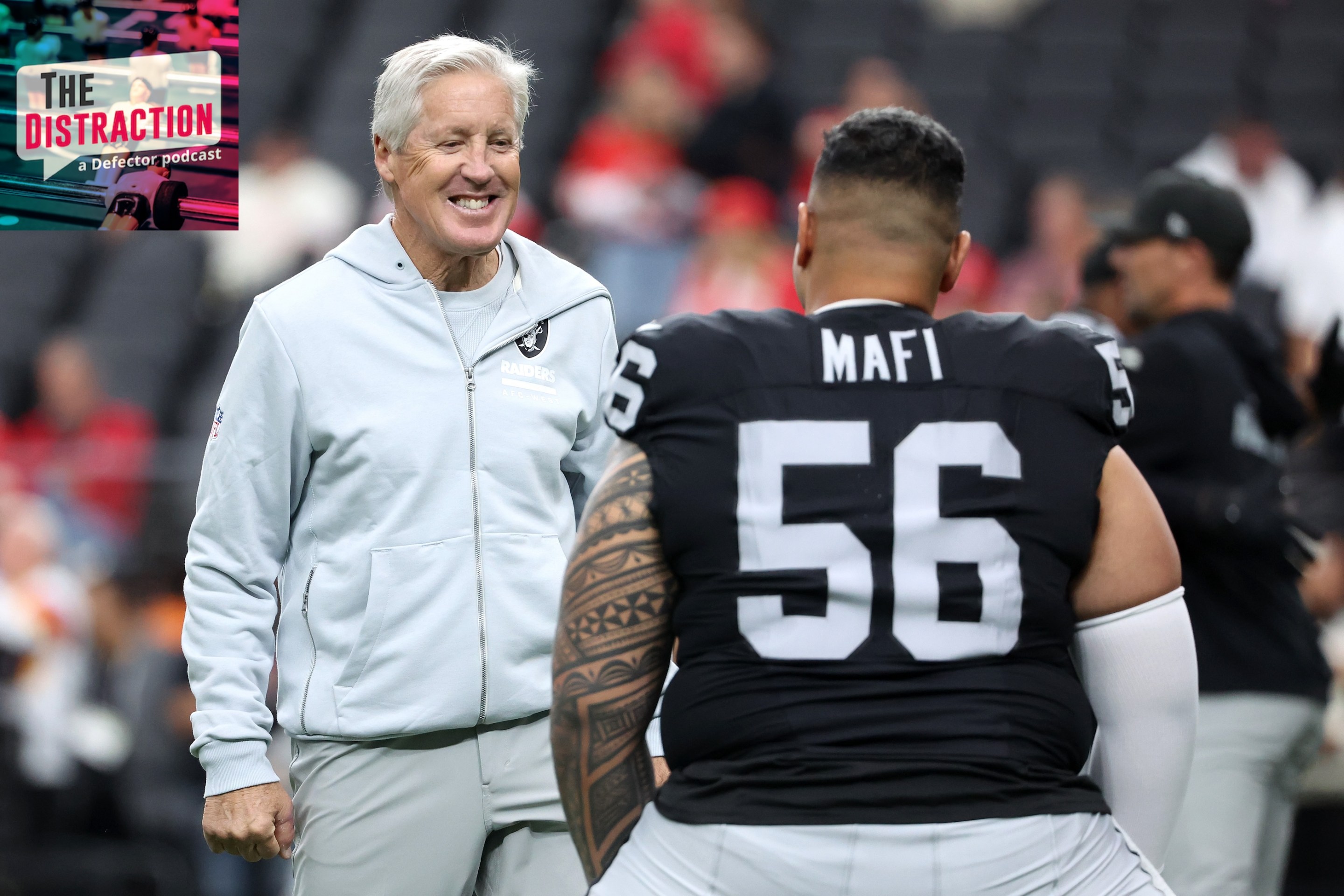I have spent all weekend replaying and marveling over Connor McDavid's assist. Between me and McDavid, that makes one of us who spent any time thinking about it.
The Oilers star was at practice yesterday, two days after his absurd first-period carve-up was relegated from pivotal play to mere highlight-reel staple by the Panthers' eventual double-overtime victory. The unwritten rules of postgame press conferences dictate that questions won't dwell on a play that ended up not affecting the game's outcome, especially for the losing team, and McDavid wouldn't have wanted to talk about it on Friday anyway—the usual blank-faced captain's deflections would'n't have made good copy. But I was hopeful, at Sunday's skate and media availability, that McDavid might've moved on from the loss and been willing to walk us through exactly what was in his mind when he did this:
Turns out, nothing was in his mind. "A lot goes into that," McDavid said. "I don’t know."
McDavid doesn't like talking about himself, but I believe him here. I think he genuinely doesn't know how to answer this. Language doesn't really have words for what happens on that level of reflex. I know we all want to be walked through it—Yeah I saw Barkov leaning so I gave him the head fake that way to get him to commit etc. etc.—but anything that happens that quickly doesn't and can't get reduced to conscious decision-making, not even in retrospect. On some level, talking (and writing!) about hockey is always going to be like, to commandeer an old saying, dancing about architecture.
What writing is good for is the context. Good for setting up the degree of difficulty on that play, by noting that Aleksander Barkov just won the damn Selke Trophy for best defensive forward, and Aaron Ekblad is a perfectly solid defensive defenseman. These weren't traffic cones—these are good-to-great defenders, even by the high standards of the NHL. But the thing about McDavid is that he's the 99th percentile of the 99th percentile in body control and spatial awareness, so he can do this to anyone. Last month he did it Jack Eichel, another Selke contender. Not even putting more guys on him is guaranteed to work.
Writing's helpful for observing patterns too. A lot of McDavid's flashiest undressings seem to come with a rolling puck. Often, this is bad news for a puckhandler's big plans, because they have to focus on settling it before making any moves. McDavid, on the other hand, almost uses it as bait. I imagine Ekblad wouldn't have so fully committed to the poke check there if he thought McDavid had complete control. But McDavid did, and Ekblad merely set himself up for a curl-and-drag he couldn't adjust to. "Sometimes when he’s crossing up and squaring you up, and the puck’s bobbling and stuff, that’s when players think they have a chance to strike," teammate Connor Brown explained.
Ekblad was asked Sunday for his side of the story. "He’s got multiple options so that’s the biggest challenge, right?" Ekblad—with the similar lack of time to really think about it—was forced to assume that, in heavy traffic, McDavid would get rid of the puck rather than try to charge through with it. That's usually a safe assumption, against most skaters. "You’re trying to block a shot, you’re trying to block a low pass, a backdoor pass," Ekblad said. And then the last option: "a walk-on-water toe drag. So, yeah, McJesus."
When McDavid said "a lot went into" the play, he wasn't just talking about his moves in that moment, but rather the lifetime of preparation that made him capable of it. Watch Sidney Crosby in warm-ups sometime, tracing the McDonald's logo with the puck. It is, of course, incredibly advanced stickhandling made to look easy. It's ritual, but it's also genuinely useful practice, painting the curves and redirecting around corners that might in game action present themselves as the only escape angles in tight quarters. McDavid didn't plan to do that. His inborn and nurtured skills let him read the situation and react, faster than the eye could see. The work pays off.
On Sunday, McDavid wrestled with the question some more. He laughed at his own struggles to put into words what, exactly he'd tell a child who hopes to develop dangles like his. What is it like to be Connor McDavid? May as well ask what it is like to be a bat. "Yeah, I don’t know. I don’t know how to answer that," he said. Leon Draisaitl jumped in with the correct answer: "Can't learn that."
"How Tracy Austin Broke My Heart" is pretty much the skeleton key for frustrated sportswriters and fans wondering why their favorite players doesn't have more interesting things to say. (It's worth the read if you haven't.) It advances the theory that elite athletic talent and self-reflection are not just incompatible, but actively antagonistic to each other. You can't be a great if you think about what you do. "[T]hose who receive and act out the gift of athletic genius must, perforce, be blind and dumb about it—and not because blindness and dumbness are the price of the gift, but because they are its essence." With all the standard caveats, this rings true, and it rings true that someone with Connor McDavid's level of talent would be a boring interview by athlete standards, even by hockey standards, which is saying something. It's not that he doesn't know how he did what he did. He just can't explain it to us, because we don't speak his language.






